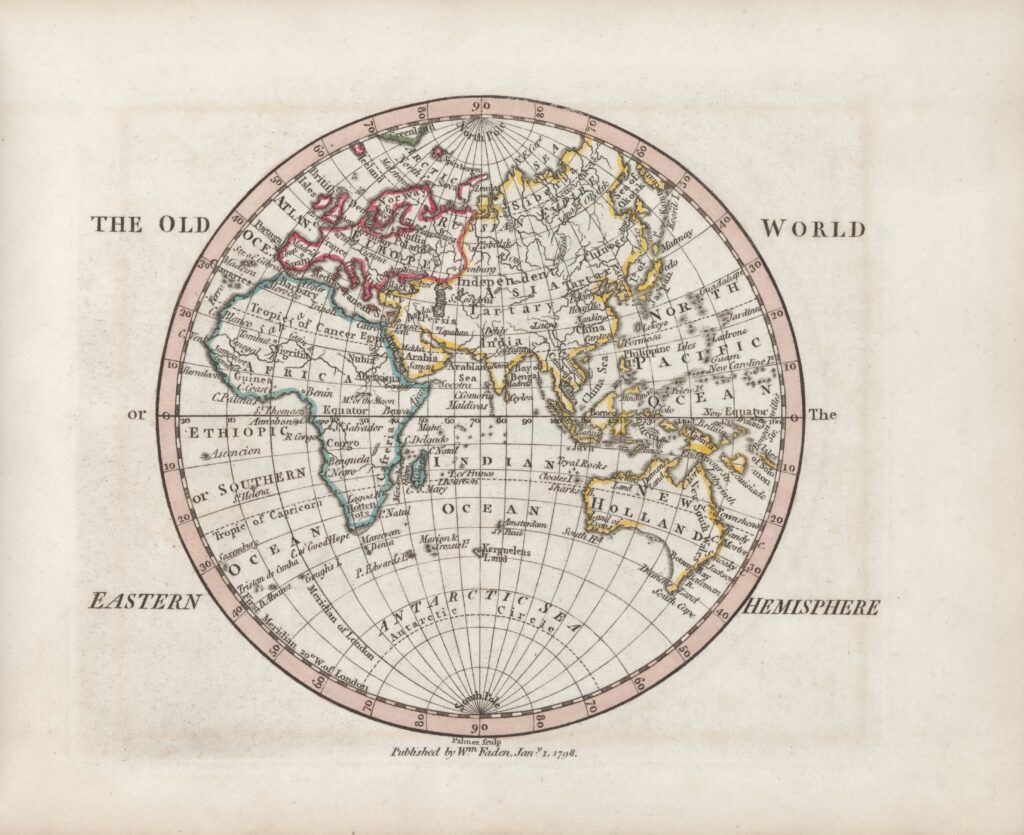
Nigeria
“The African World,” London, speaking of the awakening of the Muslins of West Africa, remarks:
“In Nigeria, the Ahmadiyya sect is taking a leading part in this liberalising movement. In a few years, Ahmadiyya lawyers and doctors will be practising, and the example is extending throughout Nigeria.
“But while the Christian Africans look to Europe and the United States for light and leadership, the Muhammadans turn to the East. They draw inspiration from Turkey and Egypt, and model their lives on oriental patterns. It is certain that in a few years Muhammadan Africans will take their place alongside their Christian countrymen in every walk of life.
“A wise statesmanship is, no doubt, seeing to it that their allegiance to the British Crown and Empire shall be as whole-hearted as that of the Christians and of their Ahmadiyya co-religionists.”
Syria
In fulfilment of the promise made by His Holiness, Hazrat Khalifatul Masih II[ra], during his visit last year to Syria, a mission has been opened in that country.
Syed Zain-ul-Abideen Waliullah Shah Sahib[ra] and Maulana Jalaluddin Shamsra HA have reached Damascus. The former has already worked as a professor in one of the colleges of that historical city before the war and the latter is a very promising young man well versed in Arabic and Islamic theology.
The Syrian people and the press have given them a hearty reception and they are having a very busy time. While welcoming our new workers, we have much pleasure to announce that during the course of a few weeks God has crowned their efforts by bringing four Syrians to the fold of Hazrat Ahmadas, i.e. Islam Ahmadiyyat. May the number increase.
Java
Maulvi Rahmat Alira HA, Arabic teacher of the Talim-ul-Islam High School, Qadian, has been sent to Java as an Ahmadi missionary. There are already more than a dozen Javanese boys studying in the Theological College, Qadian, who will, after completing their course, go back to their country, heralding the happy news of the blessed advent of the Prophet Ahmadas.
The Review of Reviews and the Prophet’s caricatures
“The Star” had injured the religious susceptibilities of all Muslims by printing a cartoon in which the Holy Prophetsa of Islam was caricatured. We were gratified that “The Star” expressed its unqualified regrets for it.
But we are shocked to find that a journal of the standing and reputation of “The Review of Reviews” has evinced a callous disregard for the feelings of so many Muslim readers by re-printing the said cartoon.
Would “The Review of Reviews” see its way to redeem this most outrageous and unprovoked insult it has inflicted on Muslims’ feelings?
“Ahmadiyyat or the True Islam”: Review by the Home Secretary of the Church Missionary Society
Following is the review of “Ahmadiyyat or the True Islam” by the Rev. William Wilson Cash, Home Secretary of the Church Missionary Society, and author of “The Muslim World in Revolution.”
“Ahmadiyyat or the True Islam,” by Hazrat Mirza Bashir-ud-Din Mahmud Ahmad, is an able and lucid exposition of the Ahmadiyya Movement, its tenets and beliefs. The author is the Head of the Community, and “the second successor of the Promised Messiah[as].”
This book was originally written for the conference on world religions, held in London in 1924. It is a translation from Urdu, and where the Quran is quoted, both the Arabic text and the English version are given.
There is a brief outline of the history of the movement, and it is claimed that its adherents have spread to almost all parts of the world and number now over half a million.
The claim of the founder of this faith is best explained in the writer’s own words: “We find,” he says, “that all religions contain prophecies concerning the advent of a Prophet in this age. The Hindus are awaiting the advent of the Neha Kalank Avtar, which has been foretold in their scriptures; the Christians are awaiting the second advent of the Messiah, the Muslims are looking forward to the appearance of the Mahdi and the Promised Messiah, the Zoroastrians believe in the coming of Mesio Darbahmi, etc. […]
“Our belief is that all these things are to be found in the Holy Founder[as] of the Ahmadiyya Movement. He claims to be the Messiah for the Christians, the Mahdi for the Muslims, Krishna for the Hindus, and Mesio Darbahmi for the Zoroastrians.”
This statement is followed by a long account of various phenomena, prophecies, visions and dreams to substantiate the truth of the tremendous claim made.
The main theme of the book is developed under four heads called the objects of religion, and deals with the Islamic conception of God, morals, the social aspects of Islam, and life after death.
Perhaps the outstanding issue of this treatise is the relationship of the Ahmadiyyat to orthodox Islam, as represented, for example, by the Azhar University of Cairo or the Wahabis of Arabia.
The author is careful to explain that in his use of the word Islam, he means Islam as interpreted by the Ahmadiyyat. This, he claims, is the true Islam. Whether this is so or not is, of course, open to question, but one thing is clear that here we have an interpretation of Islam loftier in ideals, more spiritual in aim, demanding a higher standard of moral character and more universal in scope than that of most other sects in Islam.
“It must be perfectly clear,” we are told, “that the Ahmadiyyat and Islam are one and the same thing.” Are they? Out of the 234,000,000 Muslims in the world, a very small proportion only would agree with this dictum. There has been contention in India over the claim that the Founder[as] of the Movement is the Mahdi. The Muslims of Afghanistan repudiate this new teaching as heretical and the doctors of the Azhar, while adopting an attitude of kindly tolerance, do not allow that this is the true Islam at all.
This does not, however, necessarily invalidate the Founder’s[as] claim, and the movement may yet win over to its allegiance the great mass of Muslims in the world.
The ethical standards of the Ahmadiyyat demand that to be a Muslim one must be prepared to sacrifice everything for the pleasure of God, and “to prefer the love of God to all things.” It is this insistence on a change in life, character, and morals that constitutes the strength of the whole Movement. Men are exhorted, if they would be true to their faith, to live Islam in their lives rather than proclaim it simply in creed.
Revelation is progressive, and God who has spoken in the past through many prophets has in these days spoken, says the writer, through Hazrat Mirza Ghulam Ahmad[as], in whom are summed up the ideals and aspirations of all religions.
In the heart of humanity, there lies, often at times dormant, a longing for God; but frequently this desire awakes, becomes insistent, and finds expression in a serious quest for the Divine.
The writer describes three stages in this quest towards union with God – the acceptance of prayer, the revelation, and the final stage when “man becomes the manifestation of divine attributes.”
In Sufi theology, “the way” is depicted in somewhat similar terms, and Christian mysticism teaches the same truth in the doctrine of God’s immanence in human life, expressing Himself by His attributes through men and women in deeds of love and kindness.
There is much in the Ahmadiyya teaching that is common to other faiths, much that finds its origin not only in the Quran but also in the Torah and the Gospels, and much that goes to show how tremendous is the influence of man’s spiritual aspirations upon the life of the world as a whole.
In the section dealing with the social aspect of Islam, the writer makes a spirited defence of polygamy and easy divorce, and thinks that Europe will ultimately have to adopt the same policy as Islam. This is curious after the lofty idealism of the previous chapters, and surprising in view of the monogamy movements in such Islamic countries as Turkey and Egypt.
The writer’s claim that revelation is progressive surely involves the fact of the development of moral standards beyond those of the seventh century AD.
There is an interesting chapter on the sufferings and martyrdoms of members of the Ahmadiyyat in Afghanistan, where the Quranic law of apostasy, [there is no such law in the Holy Quran (Ed., The Review of Religions)], was applied to Muslims who had joined this Movement. […]
Uniformity of creed there never has been, and religion has found expression in many ways, and the author of this book is right when he insists that only by love, service, and character can true religion be established in the world. […]
(Transcribed and edited by Al Hakam from the original English, published in the October 1925 issue of The Review of Religions)

